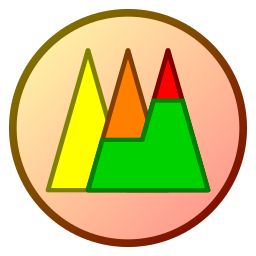
By: Juan Rada-Vilela, Ph.D.
| Branch | Status | Coverage |
|---|---|---|
| master |
pyfuzzylite is licensed under the Affero General Public License (AGPL) 3.0. Commercial licenses are also available, please contact sales@fuzzylite.com. You are strongly encouraged to support the development of the FuzzyLite Libraries by purchasing a license of QtFuzzyLite 6.
QtFuzzyLite 6 is the new and (very likely) the best graphical user interface available to easily design and directly operate fuzzy logic controllers in real time. Available for Windows, Mac, and Linux, its goal is to significantly speed up the design of your fuzzy logic controllers, while providing a very useful, functional and beautiful user interface.
Please, download it and check it out for free at www.fuzzylite.com/downloads/.
fuzzylite is a free and open-source fuzzy logic control library programmed in C++ for multiple platforms (e.g., Windows, Linux, Mac, iOS). jfuzzylite is the equivalent library for Java and Android platforms. pyfuzzylite is the equivalent library for Python. Together, they are The FuzzyLite Libraries for Fuzzy Logic Control.
The goal of the FuzzyLite Libraries is to easily design and efficiently operate fuzzy logic controllers following an object-oriented programming model without relying on external libraries.
If you are using the FuzzyLite Libraries, please cite the following reference in your article:
Juan Rada-Vilela. The FuzzyLite Libraries for Fuzzy Logic Control, 2018. URL https://fuzzylite.com/.
@misc{fl::fuzzylite,
author={Juan Rada-Vilela},
title={The FuzzyLite Libraries for Fuzzy Logic Control},
url={https://fuzzylite.com/},
year={2018}}The documentation for the fuzzylite library is available at: www.fuzzylite.com/documentation/.
All contributions are welcome, provided they follow the following guidelines:
(6) Controllers: Mamdani, Takagi-Sugeno, Larsen, Tsukamoto, Inverse Tsukamoto, Hybrids
(21) Linguistic terms: (4) Basic: triangle, trapezoid, rectangle, discrete. (9) Extended: bell, cosine, gaussian, gaussian product, pi-shape, sigmoid difference, sigmoid product, spike. (5) Edges: binary, concave, ramp, sigmoid, s-shape, z-shape. (3) Functions: constant, linear, function.
(7) Activation methods: general, proportional, threshold, first, last, lowest, highest.
(8) Conjunction and Implication (T-Norms): minimum, algebraic product, bounded difference, drastic product, einstein product, hamacher product, nilpotent minimum, function.
(10) Disjunction and Aggregation (S-Norms): maximum, algebraic sum, bounded sum, drastic sum, einstein sum, hamacher sum, nilpotent maximum, normalized sum, unbounded sum, function.
(7) Defuzzifiers: (5) Integral: centroid, bisector, smallest of maximum, largest of maximum, mean of maximum. (2) Weighted: weighted average, weighted sum.
(7) Hedges: any, not, extremely, seldom, somewhat, very, function.
(3) Importers: FuzzyLite Language fll, Fuzzy Inference System fis, Fuzzy Control Language fcl.
(7) Exporters: C++, Java, FuzzyLite Language fll, FuzzyLite Dataset fld, R script, Fuzzy Inference System fis, Fuzzy Control Language fcl.
(30+) Examples of Mamdani, Takagi-Sugeno, Tsukamoto, and Hybrid controllers from fuzzylite, Octave, and Matlab, each included in the following formats: C++, Java, fll, fld, R, fis, and fcl.
#File: ObstacleAvoidance.fll
Engine: ObstacleAvoidance
InputVariable: obstacle
enabled: true
range: 0.000 1.000
lock-range: false
term: left Ramp 1.000 0.000
term: right Ramp 0.000 1.000
OutputVariable: mSteer
enabled: true
range: 0.000 1.000
lock-range: false
aggregation: Maximum
defuzzifier: Centroid 100
default: nan
lock-previous: false
term: left Ramp 1.000 0.000
term: right Ramp 0.000 1.000
RuleBlock: mamdani
enabled: true
conjunction: none
disjunction: none
implication: AlgebraicProduct
activation: General
rule: if obstacle is left then mSteer is right
rule: if obstacle is right then mSteer is leftfuzzylite® is a registered trademark of FuzzyLite Limited.
jfuzzylite™ is a trademark of FuzzyLite Limited.
pyfuzzylite™ is a trademark of FuzzyLite Limited.
QtFuzzyLite™ is a trademark of FuzzyLite Limited.
Copyright © 2010-2018 FuzzyLite Limited. All rights reserved.